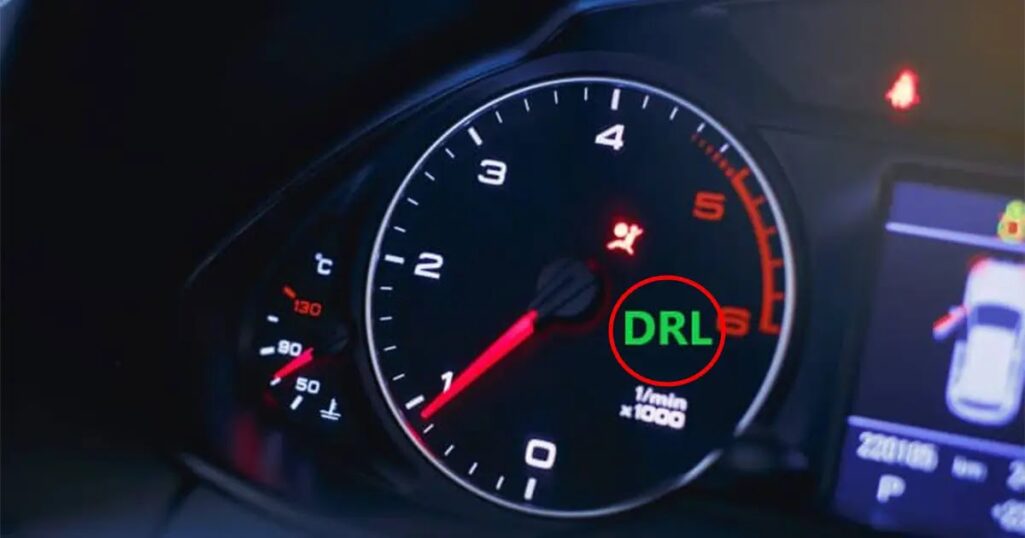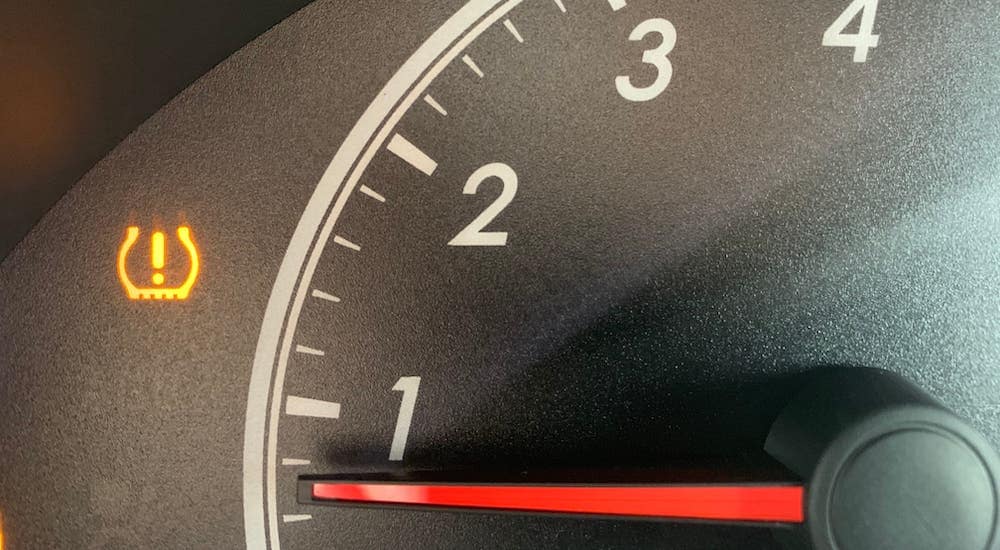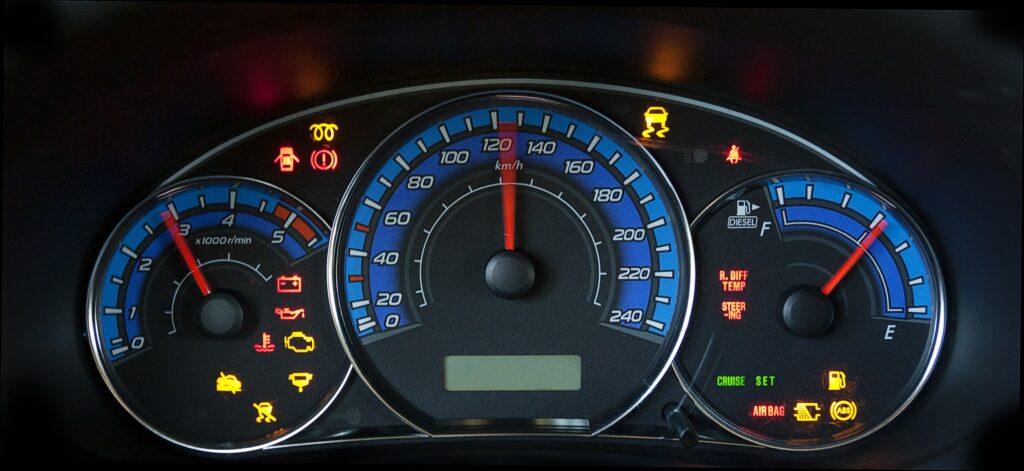
Do you know what all of those symbols on your car dashboard mean? You probably know some of them, like the one that means “oil change needed” or “check engine.” But what about the rest?
Most people don’t have a clue. In fact, according to a study by the National Highway Traffic Safety Administration, 60 percent of drivers in the U.S. can’t identify more than half of the warning lights on their dashboards. Yikes!
That’s why we’re going to take a look at some of the most common dashboard symbols and their meanings. So next time you’re driving and see one of these symbols light up, you’ll know what it means and won’t have to pull over and call a tow truck!
Understanding the Symbols on the Car Dashboard

Various icons on your dashboard may give the appearance of danger, but that is not always the case. In fact, some symbols are there to show you when certain features in your car are turned on. For example, there are symbols for lights and Cruise Control.
There are also safety warnings like Blind-Spot Monitoring and Lane Departure Warnings that pop up as well, and some others are related to mechanical issues like low tire pressure and engine temperature warnings. The only thing that matters is the color of the lights that appear on your vehicle’s dashboard symbols.
Green and Blue Light
Lights that are green and blue on the symbolic figure indicate that the particular system is usable and running as it should.
Orange or Yellow Warning Light
The presence of an orange or yellow warning light on the dashboard usually signals that maintenance or repair work is required soon. If you’re familiar with the urgency of a red and flashing light, you won’t find these alerts quite as alarming.
Red Light or Flashing
It’s time to act quickly if the warning light on your dashboard turns red. These indicators may serve as reminders to take safety precautions (such as fastening a seatbelt) or as alerts about the vehicle’s operation (like an overheating engine).
If the second situation applies, you should safely pull over to the side of the road to investigate. You might do further harm to your vehicle or have it break down if you keep driving with this issue.
Do All Cars Have the Same Symbols on Their Dashboards?
Not all vehicles use the same icons for their dashboards. The dashboard of a car may have a wide range of various indications and symbols, depending on the vehicle’s type and manufacturer. There may be brand-specific symbols on some automobiles. So, while you read this piece, please keep the following things in mind.
- Since every automobile is different, the icons on your dashboard may look different from the ones shown here. Consult your vehicle’s handbook if you’re unsure.
- When you initially switch on your car’s ignition, a number of the dashboard lights will come on for a few seconds. If the light goes out after a few seconds, then the system is functioning correctly.
Most Common Car Dashboard Symbols and Their Meanings
Here, you will be able to see a comprehensive list of the most common car symbols and their meanings. This way, the next time one of these appears on your dashboard, you’ll know what it means and can take care of the problem before it becomes more expensive.
Exhaust and Power Symbols
Lights and symbols on a car’s dashboard that pertain to the engine and emissions might indicate anything from mechanical damage to electrical problems with the emission system.
Decreased Engine Power

The “Decreased engine power” warning light comes on when there is a problem with the engine, and to protect the engine, its power output is reduced. So, this notification suggests the engine isn’t performing as efficiently as it should.
Low-Battery Signal
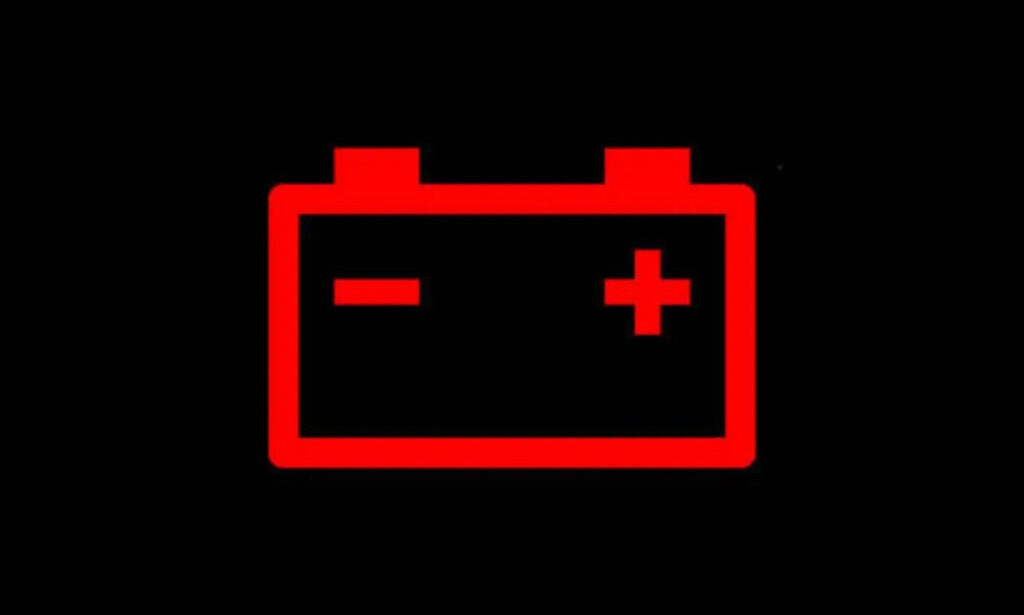
This warning light indicates a problem with the charging system in your vehicle. Fading clock lights or dimming headlights are further indicators that something is bad. It’s possible the automobile won’t turn over at all. A faulty alternator, a frayed battery cable, or any other electrical malfunction might be the source of the problem.
Insufficient Fuel
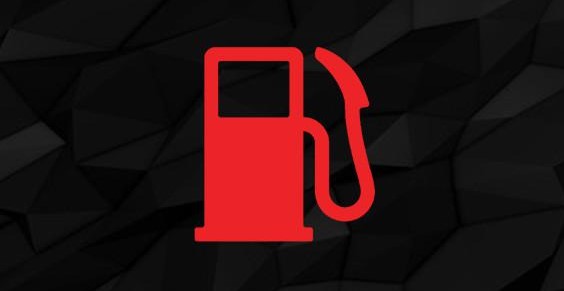
If the gasoline level indicator is flashing, you need to fill it up, or there’s a problem with the fuel sensor. You should always keep an eye on your gas gauge to avoid having to worry about having no petrol.
Flashing Check Engine Light

If your dashboard’s engine warning light is on or blinking, it means that there is currently some sort of problem with the engine. In order to communicate this message, either a sign representing the engine or the words “Check Engine” might be used.
The most common reason for a blinking light is due to misfires within the engine. However, other causes may be an open or loose gas cap, low oil pressure levels, or overheating.
The Primary Warning Signal

There’s probably an issue with your automobile if the primary warning light comes on in addition to the secondary warning lights. As such, it would be best to have a professional take a look at it as soon as possible.
Pressure & Temperature Indicators
The Pressure & Temperature Indicators on the car dashboard are important components for the safe operation of any vehicle. These indicators alert drivers to potential problems, such as low tire pressure or engine overheating, so that they can take corrective action quickly.
Fortunately, most modern vehicles come equipped with reliable pressure & temperature indicators that are designed to make it easy for drivers to keep track of their car’s performance.
Tire Pressure Indicator

The Tire Pressure Monitoring System (TPMS) symbol lets you know if there’s an issue with your tire pressure. This light has the form of three-quarters of a circle with an exclamation mark in the center. The little lines across the base represent tire tread.
- If the TPMS permanently solid, it means that the pressure in one or more of your tires is either too high or too low.
- If it flashes for 60-90 seconds once you’ve turned on your car and then stays illuminated, there might be something wrong with your TPMS sensors–even if your tires are properly inflated.
It’s risky and bad for your tires to drive about with low or excessive tire pressure. In any case, you should pull over as quickly as possible to get the tires to the right pressure.
Oil Pressure Indicator
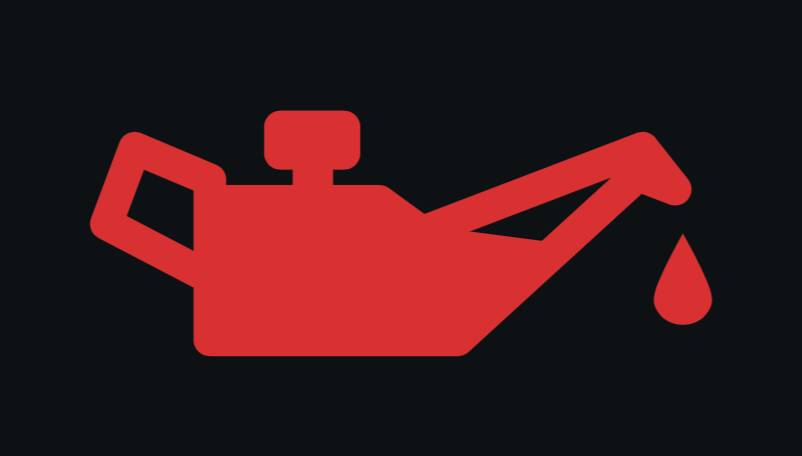
The greatest retro dashboard light is the oil can warning light with an accompanying oil drop. If this lighted pressure warning is on, it can mean that your automobile needs extra oil. More seriously, it may indicate that there is an engine leak or damage to components, such as a fractured piston ring or malfunctioning oil pump.
Check your car’s oil levels first; if that doesn’t work or if the light turns on shortly after you add more oil, have it checked out as soon as you can.
Warning Light for Low Oil
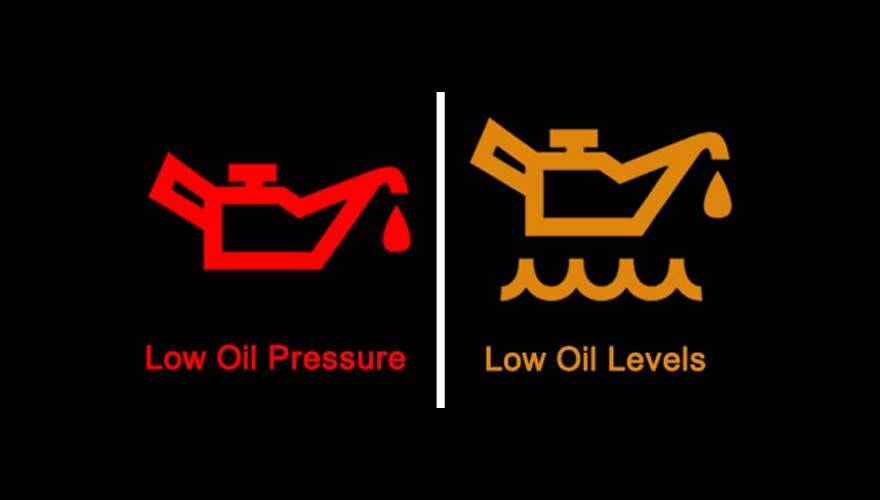
The low oil level indicator light on your dashboard is yellow, indicating that you should check the oil level in your vehicle’s engine. A damaged seal or defective sensor might be the source of a blinking or flashing light, both of which signal an even lower oil level.
Indicator for Coolant Temperature

The engine temperature warning light on the dashboard indicates that the engine coolant temperature is too high and that quick action is required to prevent further damage. Major engine damage can result from prolonged overheating if the problem is not addressed promptly.
Alert for High Transmission Temperature

This indicator is used to alert the driver that the transmission fluid level is running low. Many factors, including repeated use for heavy tugging and general wear and tear, might contribute to this issue.
If you ignore it, the transmission fluid in your automobile might overheat, which could cause serious problems. So, keep an eye on the transmission temperature and fluid level at all times when driving.
Icon for Low Coolant Level

When the antifreeze/coolant level in your automobile drops below a certain threshold, a float-type sensor will alert you with a warning light on your dashboard. The most likely culprits are the radiator, the radiator cap, the hoses (especially at the hose connection locations), and the water pump.
Safety Symbols
Never overlook a safety symbol – they are put there for a reason. They warn us about potential dangers that we might not be able to spot ourselves. If you see a red danger light, take it seriously. It could mean the difference between life and death in some cases.
Seatbelt Light
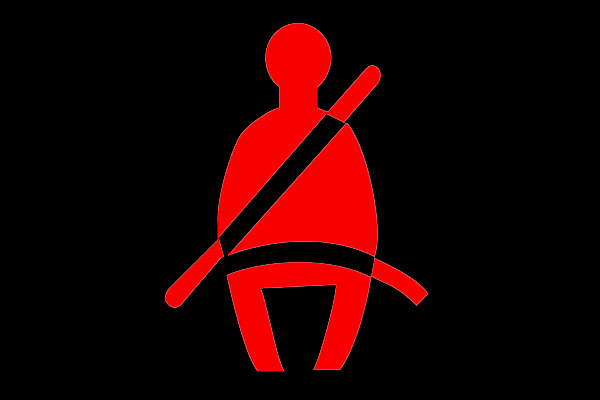
If you and your passengers have forgotten to fasten your seatbelts, this light is only a kind reminder. There is typically a constant ringing sound when this occurs. In some vehicles, you should also inspect the back seats.
The CDC report that the prevalence of major crash-related injuries is reduced by around half when passengers use seat belts. So, now fasten your seatbelts!
Warning for Cruise Control

The cruise control warning light appearing on your dashboard is an indication that there might be an issue with the cruise control or throttle system in your car. Cruise control not working can occasionally just mean the system isn’t engaged, but it could also indicate a problem with faulty sensors or wiring.
Regardless of the cause, this light coming on should always be taken seriously, as driving without cruise control can pose dangers. If you see this symbol while driving, do yourself and others a favor by taking the car to a qualified mechanic ASAP for them to check it out.
Light for Airbags (SRS Light )

The airbag warning light is a visual indication that there is an issue with the Airbag System. This may be caused by a malfunction in the system, or it may simply indicate that the system needs to be serviced.
Light for ABS (Anti-lock Braking System)

The ABS system prevents your wheels from locking up when you brake hard, such as on slick roads. If the ABS warning light is illuminated, it means that something is wrong with the system, and you should take it to a mechanic to be diagnosed as soon as possible.
Opened Door and Hood Icon
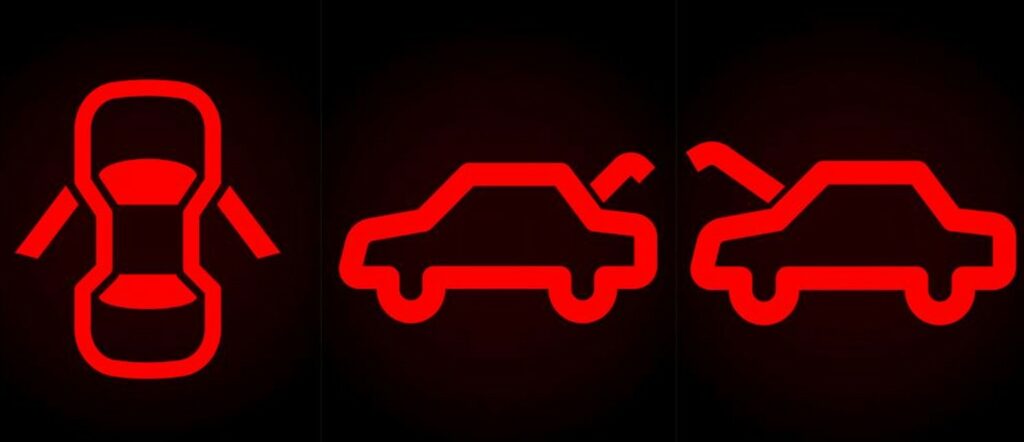
The Door Ajar Symbol is a notification that shows the status of a door. If you see this sign, it means that a door is either open or the door switch system isn’t working properly.
If the hood symbol is present, it means that it is not closed completely. High-speed driving with an open hood is extremely risky.
Automatic Shift Lock
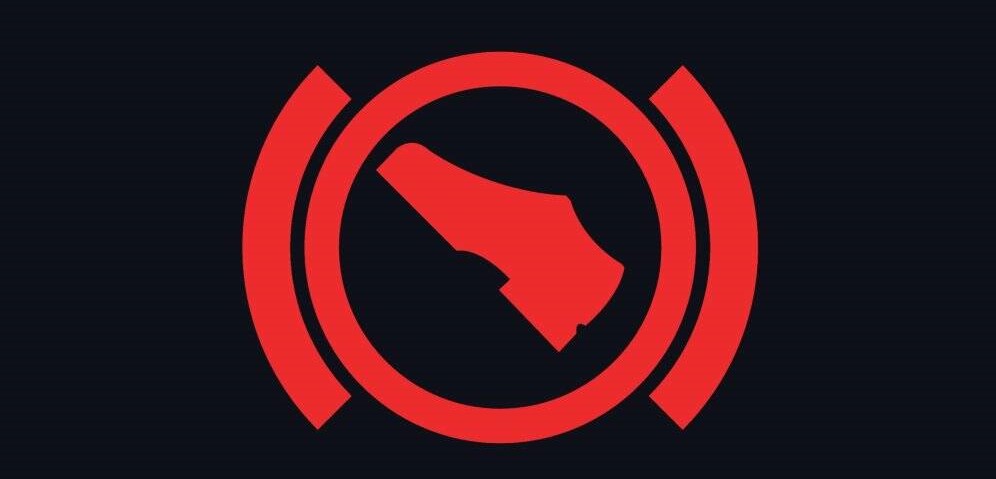
If you see this dashboard symbol, it means that you are trying to shift gears or start your ignition without first engaging the brake. The automatic shift lock will prevent your vehicle from moving out of the park or neutral until you engage the brake pedal. So, press the brake pedal down and then proceed to shift gears or start the ignition—whichever action you want to take.
Light for Faulty Traction Control
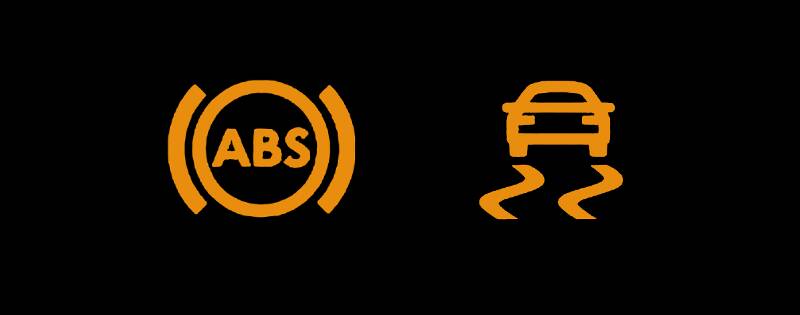
If you see this warning light, it might mean that there’s an issue with one of the sensors in the traction control system. Even though your car will be running well, you should get it inspected by a professional as soon as possible.
In some vehicles, the anti-lock braking system (ABS) and traction control share the same module, so if there’s a problem with traction control, you might also see the ABS warning light.
Light for Low Windshield Wiper Fluid
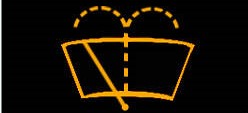
The windshield wiper-shaped icon on your dashboard is telling you that you’re low on windshield washer fluid. Be sure to fill up the reservoir as soon as possible.
Signal for the Brakes

The brake warning light is an indicator that something is wrong with the braking system. While it’s common to talk about a car’s 0-60 mph time, if the brakes don’t work properly and slow the vehicle down gradually and safely, things can get dangerous quickly. One common reason for this warning light to come on is if you try to pull away while the parking brake is still engaged.
Warning of Limited Slippage(Traction Control)
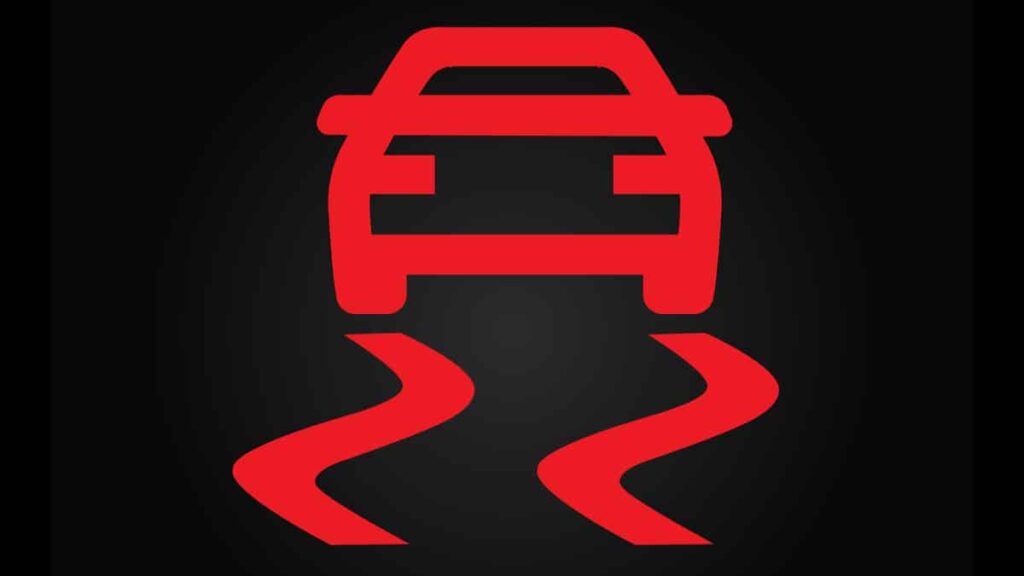
When you see this auto-icon, it means your car’s traction control is enabled. The ABS signal is used by the traction control system to identify if one wheel is spinning more quickly than the others. When it senses a wheel losing traction, it automatically applies the brakes. As an example, if you have to drive in the snow or rain, this can be a lifesaver.
Symbols for Lighting
The lighting system in your automobile is linked to several symbols, each of which conveys meaning through color. These hues, which might be blue, green, or yellow, are frequently used to denote features like turn signals and hazard lights.
Hazard Lights Icon

The hazard lights symbol means that the vehicle’s hazards are turned on. Hazards are warning signals that show other drivers that your car is either slowing down or stopped on the side of the road.
It’s important to remember that hazard lights have specific rules. Always use caution before turning on your hazard lights, and make sure you understand the law in your jurisdiction.
Indicator for High Beams
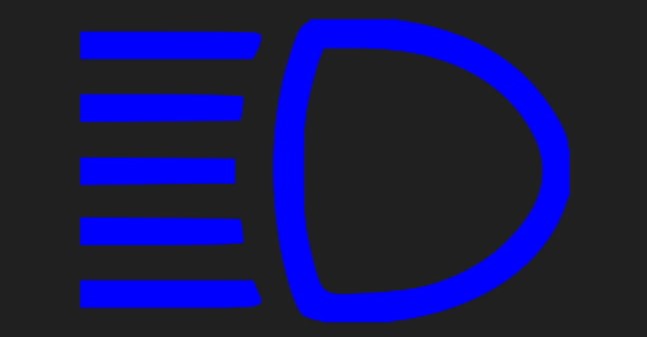
The high beam light on a car indicates that the driver has turned on their bright lights. High beams should be used when driving at night or in other conditions where visibility is limited. They provide more light than regular headlights, allowing the driver to see hazards further down the road.
Indicator for Low Beams

When you go to the low beam setting, the car’s headlights will shine downward. The dashboard’s low-beam light will illuminate to let you know. It’s a good idea to double-check this before setting out on the road, so you know which lights are functional.
Error With the Outside Lights
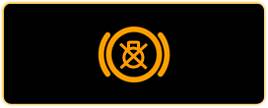
When an outside light goes out, the associated cautionary indicator will illuminate. It might be a problem with the front lights, the backlights, the turn signals, or the brake lights. In order to pinpoint the source of the problem, you need to test each external light individually.
If you need to change a bulb, look in your owner’s handbook for instructions. You should also verify the wattage of the lights to make sure they work with your car.
Indicator for Fog Lights

This symbol is to let you know that your front or back fog lights are in use. This may be useful when you can’t see well, like during a storm. In some vehicles, this might also show up when you’re using high-beam headlights too.
Defrost Indicator (Windshield & Rear Window)
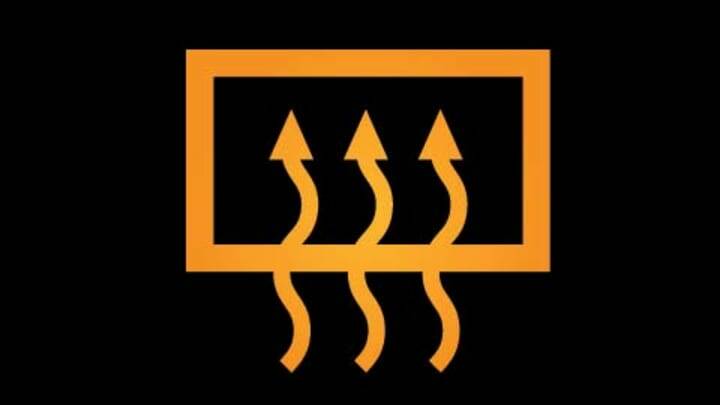
The defrost symbol appearing on your car’s display means that the windshield or rear window defrost is turned on. This feature clears fog and ice from your vehicle’s windshield or rear window. Depending on the make and model of the car, this symbol may look like a snowflake in a box, an arrow pointing up with a line underneath it, or a fan-like shape.
Conclusion
Once you learn to decode the information your car’s dashboard displays, you’ll have a far clearer picture of what’s going on with your ride. You’ll be safer on the road and could even be able to cut costs on auto maintenance by learning this.
Do you have any thoughts or experiences to share about this topic? We’d love to hear from you in the comments below!
Frequently Asked Questions (FAQs)
What Symbol Is Low Tire Pressure?
The Tire Pressure Monitoring System (TPMS) indicator on your dashboard is easy to spot if you know what you’re looking for. It resembles a horseshoe with an exclamation point in the center, and it tells you that one or more of your tires has low pressure.
What are C and H in cars?
The car’s temperature gauge is there to tell you if the coolant system in your vehicle is working as it should. The needle on the dial should always stay between ‘cold’ (C) and ‘hot’ (H). If it goes below or above the midpoint, then something isn’t right.

